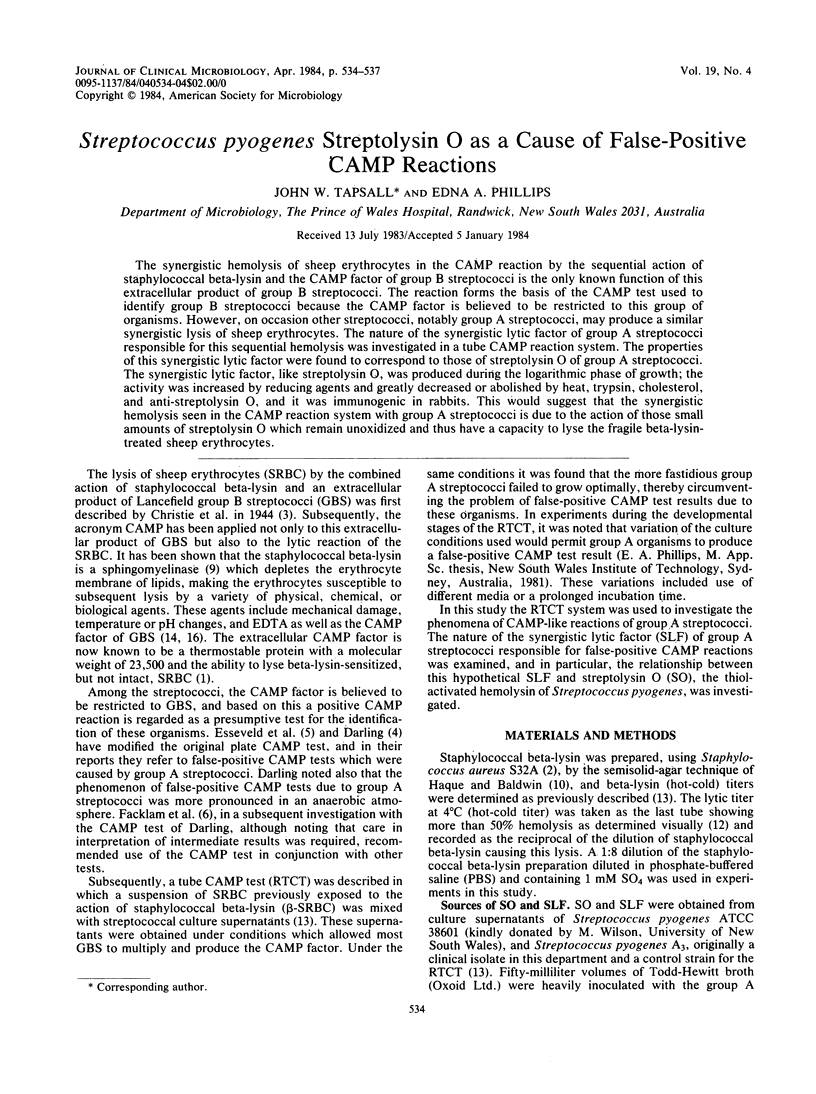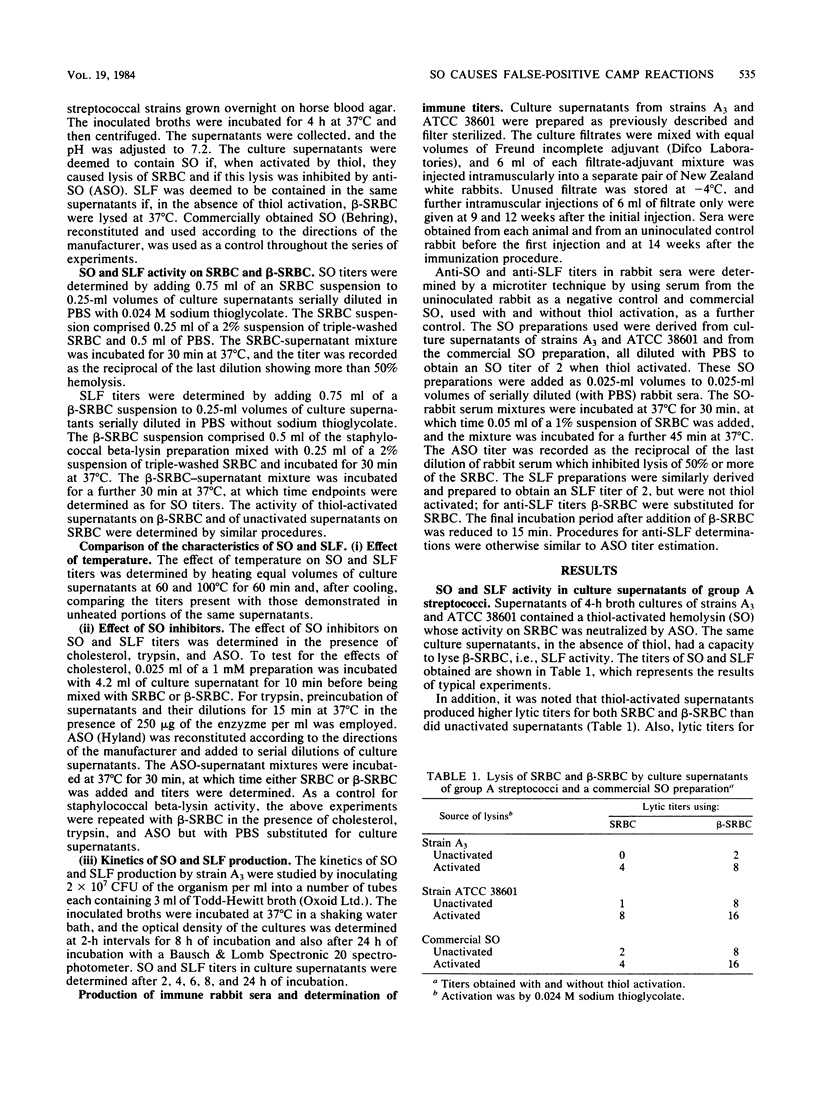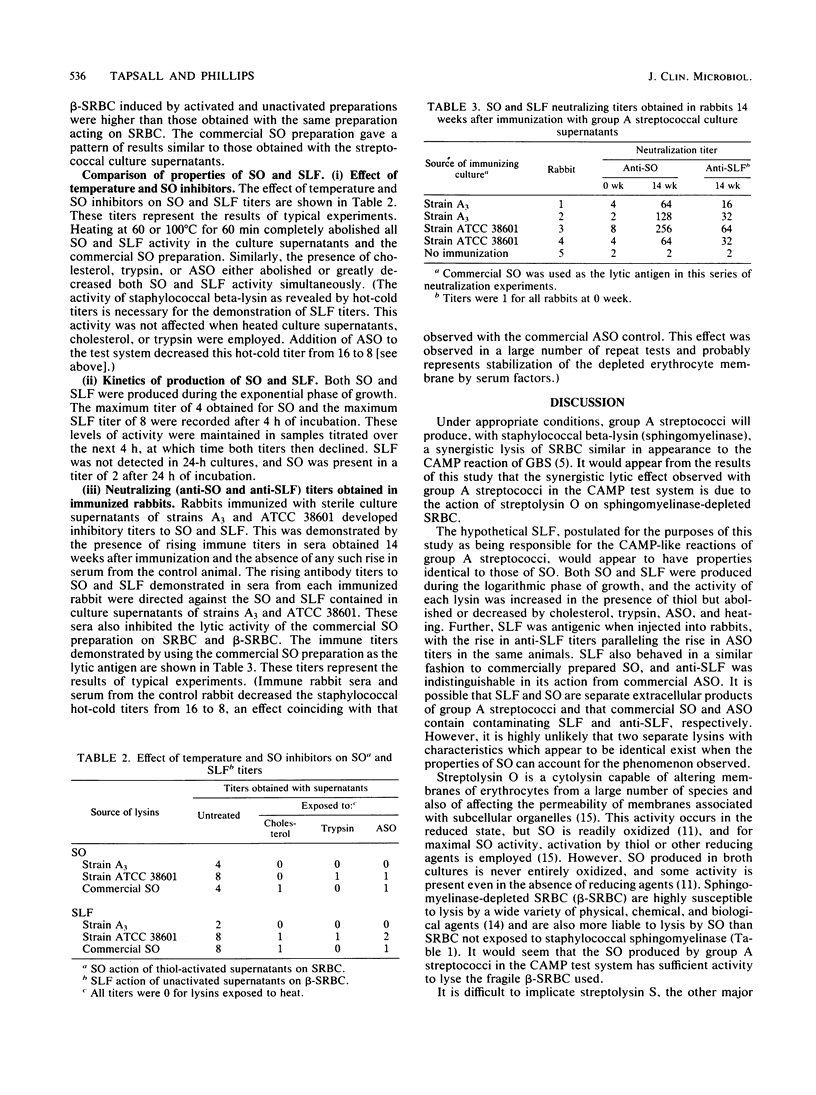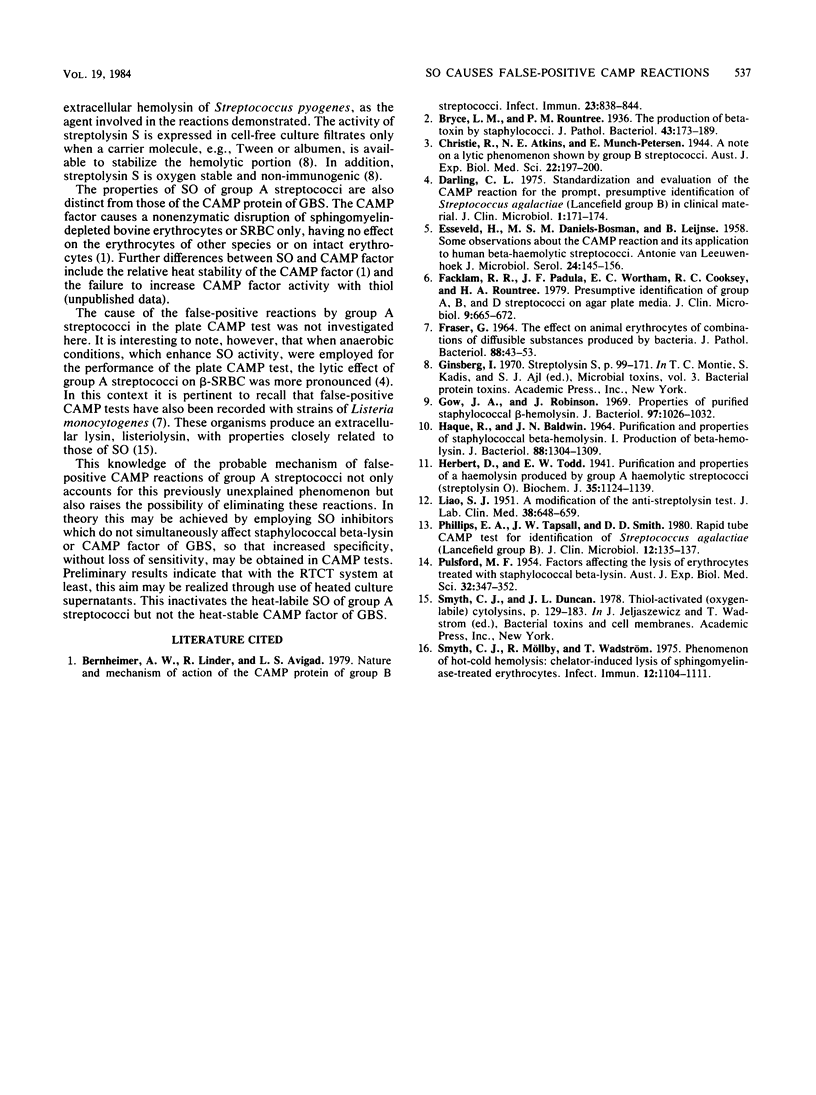Abstract
The synergistic hemolysis of sheep erythrocytes in the CAMP reaction by the sequential action of staphylococcal beta-lysin and the CAMP factor of group B streptococci is the only known function of this extracellular product of group B streptococci. The reaction forms the basis of the CAMP test used to identify group B streptococci because the CAMP factor is believed to be restricted to this group of organisms. However, on occasion other streptococci, notably group A streptococci, may produce a similar synergistic lysis of sheep erythrocytes. The nature of the synergistic lytic factor of group A streptococci responsible for this sequential hemolysis was investigated in a tube CAMP reaction system. The properties of this synergistic lytic factor were found to correspond to those of streptolysin O of group A streptococci. The synergistic lytic factor, like streptolysin O, was produced during the logarithmic phase of growth; the activity was increased by reducing agents and greatly decreased or abolished by heat, trypsin, cholesterol, and anti-streptolysin O, and it was immunogenic in rabbits. This would suggest that the synergistic hemolysis seen in the CAMP reaction system with group A streptococci is due to the action of those small amounts of streptolysin O which remain unoxidized and thus have a capacity to lyse the fragile beta-lysin-treated sheep erythrocytes.
Full text
PDF



Selected References
These references are in PubMed. This may not be the complete list of references from this article.
- Bernheimer A. W., Linder R., Avigad L. S. Nature and mechanism of action of the CAMP protein of group B streptococci. Infect Immun. 1979 Mar;23(3):838–844. doi: 10.1128/iai.23.3.838-844.1979. [DOI] [PMC free article] [PubMed] [Google Scholar]
- Darling C. L. Standardization and evaluation of the CAMP reaction for the prompt, presumptive identification of Streptococcus agalactiae (Lancefield group B) in clinical material. J Clin Microbiol. 1975 Feb;1(2):171–174. doi: 10.1128/jcm.1.2.171-174.1975. [DOI] [PMC free article] [PubMed] [Google Scholar]
- ESSEVELD H., DANIELS-BOSMAN M. S., LEIJNSE B. Some observations about the CAMP reaction and its application to human beta haemolytic streptococci. Antonie Van Leeuwenhoek. 1958;24(2):145–156. doi: 10.1007/BF02548442. [DOI] [PubMed] [Google Scholar]
- FRASER G. THE EFFECT ON ANIMAL ERYTHROCYTES OF COMBINATIONS OF DIFFUSIBLE SUBSTANCES PRODUCED BY BACTERIA. J Pathol Bacteriol. 1964 Jul;88:43–53. doi: 10.1002/path.1700880105. [DOI] [PubMed] [Google Scholar]
- Facklam R. R., Padula J. F., Wortham E. C., Cooksey R. C., Rountree H. A. Presumptive identification of group A, B, and D streptococci on agar plate media. J Clin Microbiol. 1979 Jun;9(6):665–672. doi: 10.1128/jcm.9.6.665-672.1979. [DOI] [PMC free article] [PubMed] [Google Scholar]
- Gow J. A., Robinson J. Properties of purified staphylococcal beta-hemolysin. J Bacteriol. 1969 Mar;97(3):1026–1032. doi: 10.1128/jb.97.3.1026-1032.1969. [DOI] [PMC free article] [PubMed] [Google Scholar]
- HAQUE R. U., BALDWIN J. N. PURIFICATION AND PROPERTIES OF STAPHYLOCOCCAL BETA-HEMOLYSIN. I. PRODUCTION OF BETA-HEMOLYSIN. J Bacteriol. 1964 Nov;88:1304–1309. doi: 10.1128/jb.88.5.1304-1309.1964. [DOI] [PMC free article] [PubMed] [Google Scholar]
- Herbert D., Todd E. W. Purification and properties of a haemolysin produced by group A haemolytic streptococci (streptolysin O). Biochem J. 1941 Nov;35(10-11):1124–1139. doi: 10.1042/bj0351124. [DOI] [PMC free article] [PubMed] [Google Scholar]
- LIAO S. J. A modification of the antistreptolysin test. J Lab Clin Med. 1951 Oct;38(4):648–649. [PubMed] [Google Scholar]
- PULSFORD M. F. Factors affecting the lysis of erythrocytes treated with staphylococcal beta toxin. Aust J Exp Biol Med Sci. 1954 Jun;32(3):347–352. doi: 10.1038/icb.1954.37. [DOI] [PubMed] [Google Scholar]
- Phillips E. A., Tapsall J. W., Smith D. D. Rapid tube CAMP test for identification of Streptococcus agalactiae (Lancefield group B). J Clin Microbiol. 1980 Aug;12(2):135–137. doi: 10.1128/jcm.12.2.135-137.1980. [DOI] [PMC free article] [PubMed] [Google Scholar]
- Smyth C. J., Möllby R., Wadström T. Phenomenon of hot-cold hemolysis: chelator-induced lysis of sphingomyelinase-treated erythrocytes. Infect Immun. 1975 Nov;12(5):1104–1111. doi: 10.1128/iai.12.5.1104-1111.1975. [DOI] [PMC free article] [PubMed] [Google Scholar]


